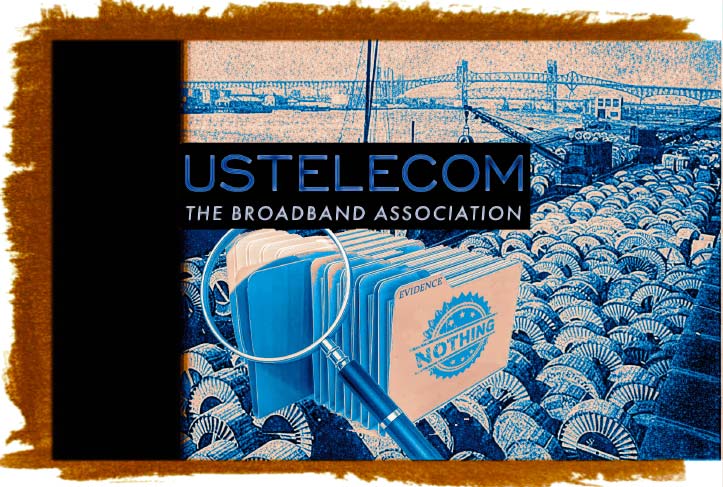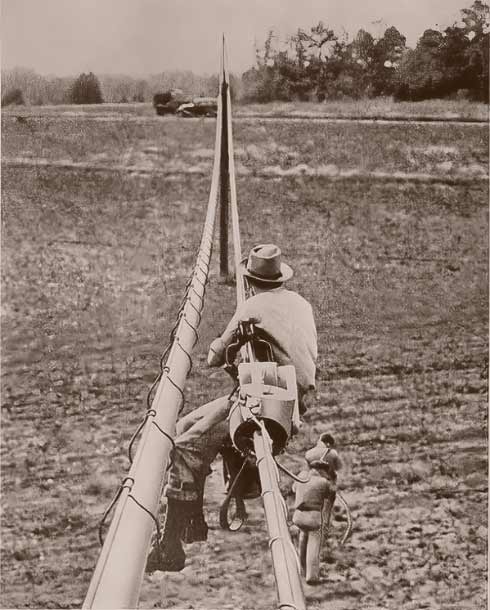
BEGINNING IN THE 1980s these reels of lead-covered cable were shipped to points throughout the country where an expanding telephone service required them. The wire was being turned out at the rate of 2.16 billion conductor feet per year, according to Western Electric. The cables continued to be installed until the 1950s. USTELECOM said that some of the cables are still in use but did not say how many miles or how many cables have been abandoned. In response to the Wall Street Journal article that unearthed the dangers of buried lead cables, they said they have “not seen, nor have regulators identified, evidence that legacy lead-sheathed telecom cables are a leading cause of lead exposure or the cause of a public health issue.”
Shares of AT&T Inc fell more than 5% yesterday, reaching their lowest level in thirty years, after analysts downgraded the stock following a Wall Street Journal report last week that said the telecommunications giant left toxic lead cables buried across the United States.

A telecom engineer working on cabling back in the 1920s before there were safety protocols for working with lead shielded cables. – Wikimedia/ American Telephone and Telegraph Company
The investigative article said that Verizon and other carriers also abandoned the underground lead cables, possibly contaminating neighboring soil and drinking water sources.
“The primary potential fundamental risk that this issue raises, in our view, is that it may take the major wireline telcos longer, and cost them more, to decommission legacy networks based on copper cables that may have lead sheathing,” Goldman Sachs analyst Brett Feldman said in his note to clients.
Moffett Nathanson analyst Craig Moffett similarly informed his clients, “We could see what amounts to a general telecom buyer’s strike for some time,” even if AT&T and Verizon offered attractive dividends.
Verizon’s stock dropped 7.5% to $31.46. Frontier is also taking a shellacking, tumbling 15.8% yesterday.
It is not immediately known how the nation’s wireless contractors will be affected as the carriers incur additional legacy network decommissioning costs based upon known costs of their fiber upgrades. The industry is currently seeing build opportunities slowing down.
Raymond James analyst Frank Louthan said in a note to clients, “We can’t begin to know how long this will take to get resolved, but it could be measured in decades.”
USTELECOM responds with a community and worker safety position
USTELECOM – The Broadband Association reacted immediately to the published report to assist its carrier members but said it had been unable to confirm the information published by the Wall Street Journal “because we do not have access to all of the data or methodology underly their conclusions.”
However, it attempted to assuage community concerns by emphasizing that “Some of these cables still provide customer voice and data services, including connecting 911 service, fire alarms, and other central monitoring stations,” as if one would have to weigh the tradeoff because “broadband providers invested $86 billion into world-class networks and connectivity infrastructure enabling 92% of Americans to have high-speed internet to access health care, education, ecommerce, job training and more.”
On a new website page, USTELECOM said lead is found everywhere, including lead in ammunition and fishing gear.
The trade group said that according to the Department of Health and Human Services’ Agency for Toxic Substances and Disease Registry most human exposure to lead occurs through inhalation and ingestion.
The organization said that risks associated with legacy lead-sheathed telecom cables are mitigated by the nature of the material, their location, coatings on them, conduits surrounding them, and other factors. Telecom cables are generally in areas that minimize the potential for public contact.”
They noted that safe work practices within the telecommunications industry have effectively reduced potential lead exposure to workers.
AT&T says article was flawed and a test firm had a conflict of interest
AT&T challenged the WSJ’s findings, stating the publication’s testing methodologies “are flawed and one of the companies responsible for the testing is compromised by a conflict of interest,” AT&T’s wrote on its dedicated page for legacy-clad cables. “The scientific literature and reliable studies in the US and abroad give no reason to believe that these cables pose a public health issue or a risk to workers when appropriate safety measures are in place,” AT&T said.
The company said any new scientific data needs to be studied further before arriving at conclusions about public health and safety related to these cables. “Should there be a need for further analysis of this topic, we will work collaboratively with industry peers and other stakeholders and act responsibly,” AT&T said, referring readers to USTELECOM’s website for further information.















